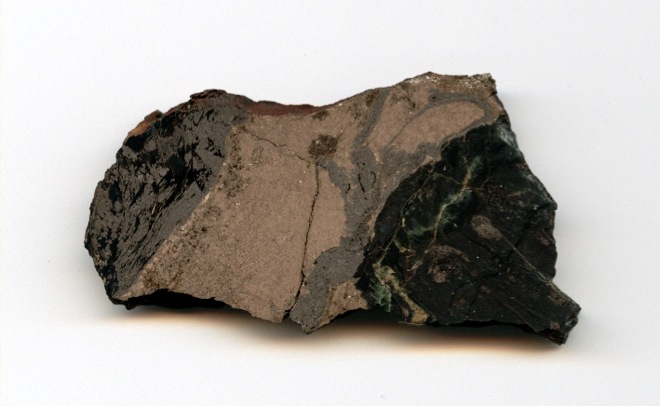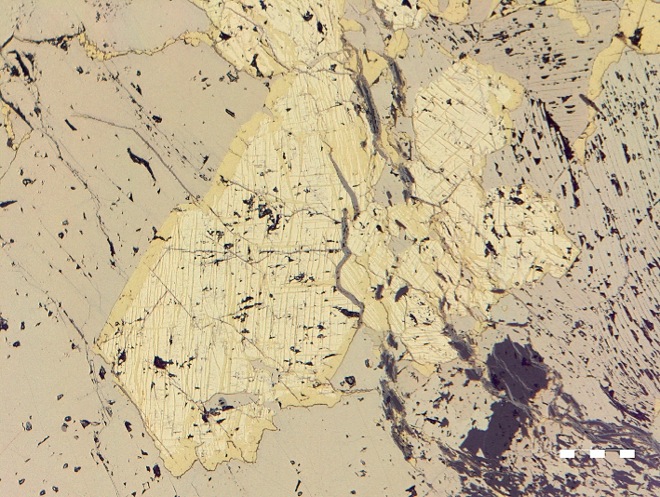Poggio San Vittore, close to Balangero, was once the largest open pit asbestos mine in Europe. The quarry was closed in 1990. The Balangero body consists of antigorite serpentinite with a network of chrysotile veins. Fe/Ni ore minerals can be found in the quarry, even in form of cm thick veins. Balangero is one of the places where terrestrial troilite occurs.
Polished slab of a serpeninite sample. Scattered in the serpentine are blebs of ore, very difficult to capture in a scan. Width: 9 cm

A cross cut through a troilite-pyrrhotite vein, surrounded by magnetite. Sample width: 6 cm

Polished sample from the contact region between the magnetite and the pyrrhotite (on the left side of the slab above). The contact zone is dominated by chalcopyrite. Nic //, Obj. 20x, air, three fotos mounted together:
![[Group 2]-image_00001_image_00003-3 images](files/005bgroup-2005d-image_00001_image_00003-3-images.jpg)
Pentlandite, with lamellae and rim of chalcopyrite. Nic //, Obj. 20x, air, 100 µm scale bar:

The same with a 440 nm filter, Nic //, Obj. 20x, air, 100 µm scale bar:

Pyrrhotite with exsolution structure, with chalcopyrite at the border to the magnetite. Nic +, Obj. 20x, air, 100 µm scale bar:

Small veins of chalcopyrite in the magnetite part of the sample. Nic //, Obj. 20x, air, 100 µm scale bar:

For further informations on the region this article might be interesting:
Zucchetti, S.: Ferro-nichel nativo ed altri minerali nicheliferi in serpentiniti anche asbestifere delle Alpi Occidentali. Rendiconti della Società Italiana di Mineralogia e Petrologia.26.(1970).377-339.
Rossetti, P., Zucchetti, S.: Early-alpine ore parageneses in the serpentinites from the Balangero asbestos mine and Lonza Massif (Internal Western Alpes). Rendiconti della Società Italiana di Mineralogia e Petrologia.43.(1988).139-149.


